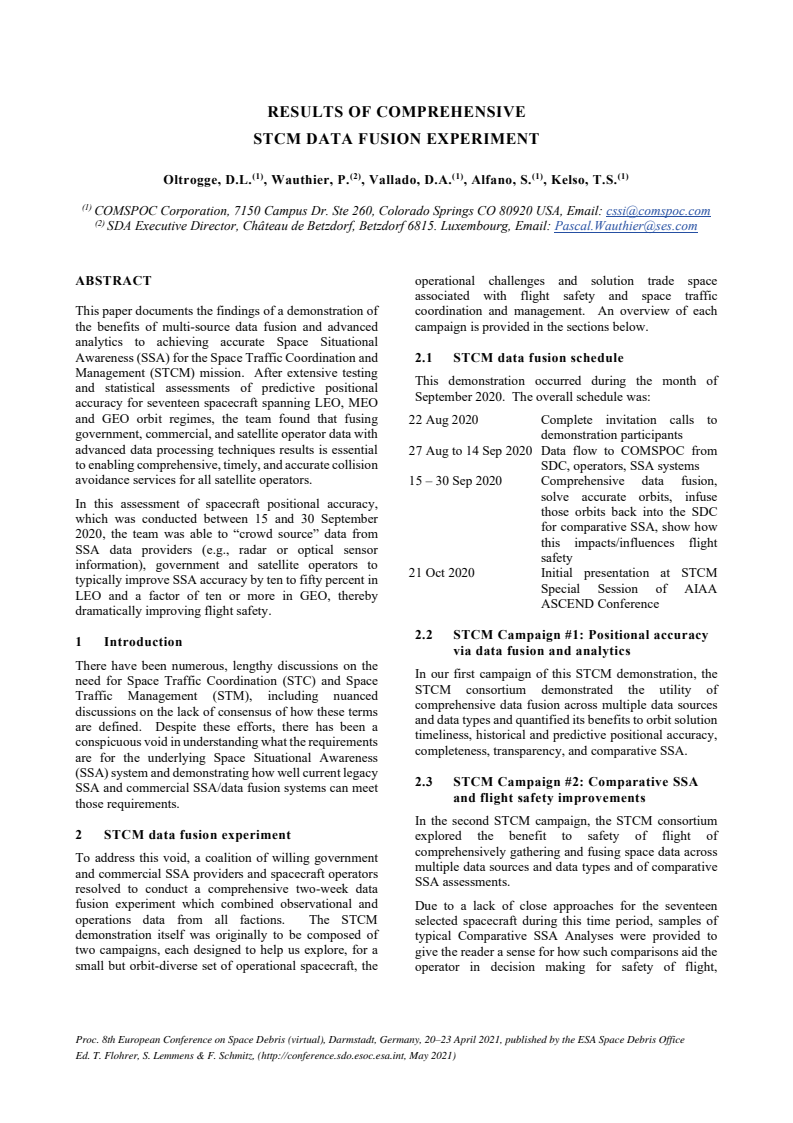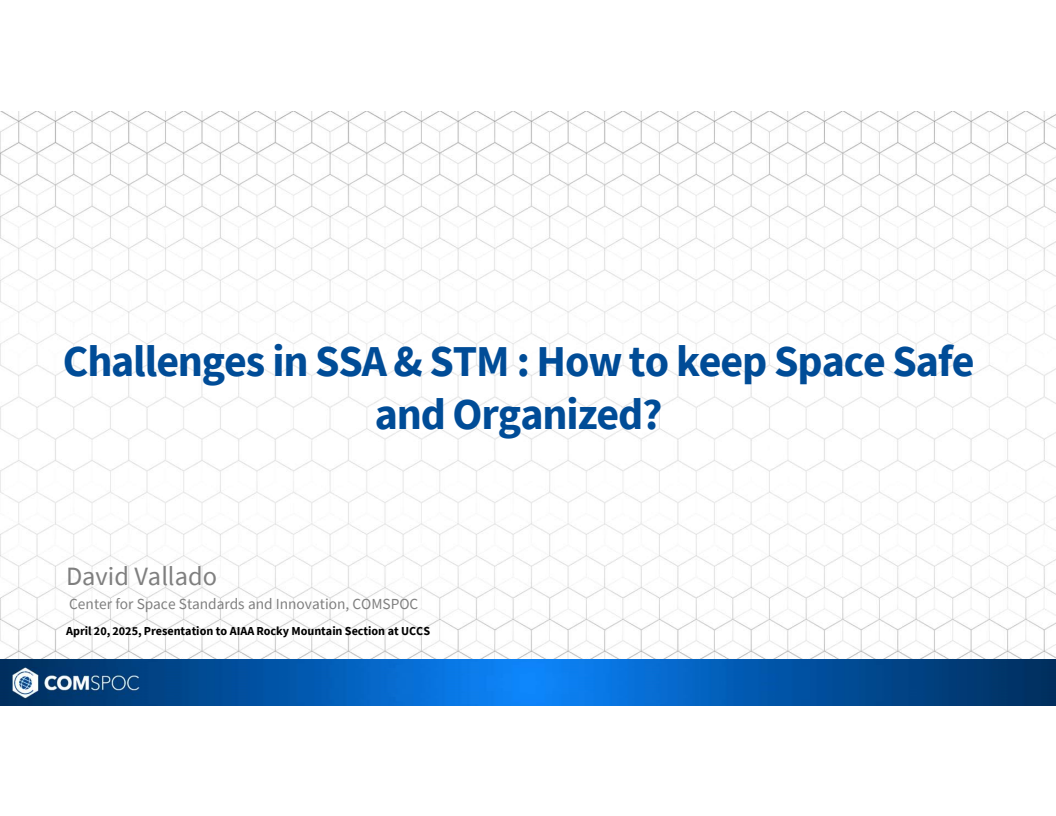Results of comprehensive STCM data fusion experiment

Id: 239
Type: Conference paper
Published: 04/23/2021
Event: European Conference on Space Debris 2021
Authors:
Click an author to filter the list of related assets below.Abstract:
This paper documents the findings of a demonstration of the benefits of multi-source data fusion and advanced analytics to achieving accurate Space Situational Awareness (SSA) for the Space Traffic Coordination and Management (STCM) mission. After extensive testing and statistical assessments of predictive positional accuracy for seventeen spacecraft spanning LEO, MEO and GEO orbit regimes, the team found that fusing government, commercial, and satellite operator data with advanced data processing techniques results is essential to enabling comprehensive, timely, and accurate collision avoidance services for all satellite operators. In this assessment of spacecraft positional accuracy, which was conducted between 15 and 30 September 2020, the team was able to “crowd source” data from SSA data providers (e.g., radar or optical sensor information), government and satellite operators to typically improve SSA accuracy by ten to fifty percent in LEO and a factor of ten or more in GEO, thereby dramatically improving flight safety.
Keywords:
Click a keyword to filter the list of related assets below.Citation:
Oltrogge, D.L., Wauthier, P., Vallado, D.V., Alfano, S., and Kelso, T.S., “Results Of Comprehensive STCM Data Fusion Experiment,” Proc. 8th European Conference on Space Debris (virtual), Darmstadt, Germany, 20-23 April 2021, https://conference.sdo.esoc.esa.int/proceedings/sdc8/paper/263/SDC8-paper263.pdf (accessed 30 September 2021).
Papers with related authors:

Using Spacebook and Cesium to Promote and Enhance Flight Safety
Read More
Actionability and Persistence Of Conjunction Data
Read More
Actionability and Persistence of Conjunction Data
Read More
Synthetic Covariance Production Using a New Digital Approach
Read More
Actionability and Persistence of Conjunction Data
Read More

Russian ASAT Debris Cloud Evolution and Risk
Read More
Practical issues with using a full gravity field
Read More
Deep operator and SSA collaboration for space sustainability
Read More
Addressing the debilitating effects of maneuvers on SSA accuracy and timeliness
Read More
DEEP OPERATOR AND SSA COLLABORATION FOR SPACE SUSTAINABILITY
Read More
Debris Risk Evolution And Dispersal (DREAD) for post-fragmentation modeling
Read More
Fragmentation event debris field evolution using 3d volumetric risk assessment
Read More
Application of New Debris Risk Evolution And Dissipation (DREAD) Tool to Characterize Post-Fragmentation Risk
Read More
New Consolidated Files for Earth Orientation Parameters and Space Weather Data
Read More
Updated Analytical Partials for Covariance Transformations and Optimization
Read More
ORBIT DETERMINATION ISSUES AND RESULTS TO INCORPORATE OPTICAL MEASUREMENTS IN CONJUNCTION OPERATIONS
Read More







LEO satellite behavior during the May 2024 Gannon geomagnetic storm
Read More
Contrasting the Inflection Points and Efforts in Space Traffic Coordination and Management
Read More






Sequential Processing of ILRS Observations – Experiences over the last 5 years
Read More


Orbital Strategies to Mitigate the Solar Exclusion Effect on Space-Based Observation of the Geosynchronous Belt
Read More
Sequential Orbit Determination Using Satellite Laser Ranging
Read More
Improved SSA through orbit determination of Two Line Element Sets
Read More


Evaluating Gooding Angles-only Orbit Determination of Space Based Space Surveillance Measurements
Read More

Videos with related keywords:
Large constellation applications through 2034
Watch Video

